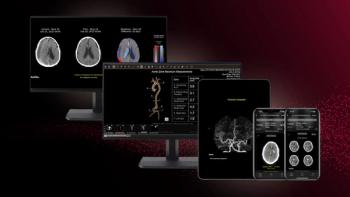
Fewer Head CT Axial Slices Lowers Dose for Children with Hydrocephalus
Limited-sequence CT scans reduce exposure in children with hydrocephalus who have frequent scans, but still gather adequate diagnostic data.
Limited-sequence head CT scanning minimizes radiation exposure yet still provides adequate and accurate diagnostic information in children with shunted hydrocephalus, according to a study published in the
Children with hydrocephalus undergo frequent head CT scans, which provide 32 to 40 axial slices for viewing. The frequency has caused concern about radiation toxicity so researchers from Johns Hopkins University undertook a retrospective study to explore the use of a newly-defined limited sequence of axial head CT slices to evaluate its feasibility in this population.
"The traditional thinking has been that fewer slices would, by definition, mean less clarity and less accuracy, rendering a CT scan suboptimal, but our findings show otherwise," said lead investigator and Johns Hopkins chief neurosurgery resident Jonathan Pindrik, MD, in a release.
The study involved CT images from 50 children with hydrocephalus, aged 17 years or younger (mean age 5.5 years), who underwent scanning over five years. The researchers extracted seven axial slices for blinded review by two pediatric neuroradiologists and one pediatric neurosurgeon. Limited-sequence CT evaluation focused on the adequacy of portraying the ventricular system, changes in ventricular size, and visualization of the proximal catheter. The reviewers assessed all original full series head CT scans at least four months later for comparison.
The results showed that the limited-sequence CT adequately portrayed the ventricles, however there was a 4 percent error rate with the low-dose capture of ventricle size. Two of the 50 images were visually ambiguous.
According to the researchers, “In one case, the inaccurate assessment would not have altered clinical management.”
The low-dose images produced no false negatives, but there were three false positives.
The researchers concluded that, “limited-sequence head CT scanning provided adequate and accurate diagnostic information in children with shunted hydrocephalus.”
This finding could be particularly useful in emergency rooms where children with hydrocephalus may need urgent scanning but where MRIs are not as available as CT scanners.
Newsletter
Stay at the forefront of radiology with the Diagnostic Imaging newsletter, delivering the latest news, clinical insights, and imaging advancements for today’s radiologists.




























